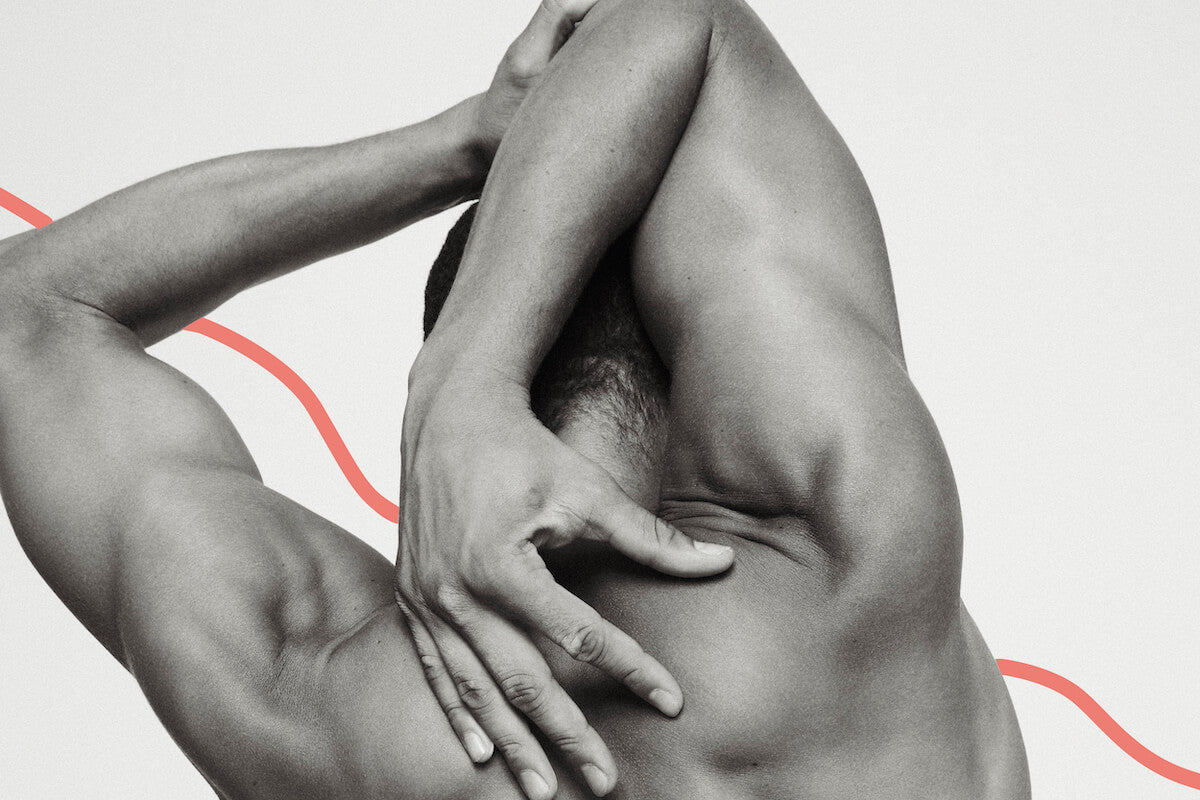Your shoulders hold you up both metaphorically and literally when you're exercising.
If you’re somewhat new to the gym, you might be surprised to find out how large of a role your shoulder muscles play in strengthening other muscle groups, as well as supporting day to day activity and movement.
Whether you want to build visible muscle or just remain strong and supportive, these are the best shoulder exercises to start building strength.
Before we get stuck in, it’s important to understand your main shoulder muscles and how they work – spoiler: they’re a pretty complicated...
Shoulder anatomy

The shoulder is a ball and socket joint, which gives it far more freedom of movement compared to other joints. This comes with the requirement of much more muscular support, to ensure the joint stays in place and can move freely. The result is that the shoulder has many supporting muscles, all of which contribute to this mobility and stability.
The largest shoulder muscle is the deltoid (‘delts’). Your deltoids are responsible for arm rotation, preventing dislocation, and protecting the humerus (the upper arm bone) from injury when lifting or carrying heavy objects.However, it's always great to further protect yourself from injury and aid recovery when doing extensive workouts. You can easily do this by making sure to stretch properly and by taking recovery aiders like a post-workout protein powder.
The rotator cuff is a grouping of muscles (teres minor, supraspinatus, subscapularis and infraspinatus) and tendons which surround the shoulder joint and keep the arm secure from dislocation, as well as providing mobility and stability.
The teres major runs under the shoulder joint toward the back of the armpit. It helps to draw the arm in towards the body and rotate it inwards.
Your trapezius (or ‘traps’) support the arms and shoulder blades, and aid arm raising. These are the triangular shaped muscles that run from the top of your spine, down and across your shoulder blades. The levator scapulae is located at the side and back of the neck, and moves the shoulder blades.
So now we know what we’re working with, how do we go about strengthening these muscles? Here are our seven best shoulder exercises to develop strong and supportive shoulder muscles.
Standing lateral raise
A killer for your delts, this move delivers the best results from slow and stable movement. Holding a weight in each hand, bring your hands out to the side until your arms are parallel to the ground, keeping them straight. Hold for a second or two, then slowly lower back to your sides. Repeat.
Bent lateral raise
Simple but effective, it doesn’t take a heavy weight to ensure you’re feeling the burn on this one. Holding a weight in each hand, bend forward from a standing position until your body is parallel to the ground. Bring your hands out to the side until your arms are parallel to the ground, then slowly lower until they are hanging in front of you. Repeat
Barbell overhead press
This shoulder exercise is a great all-rounder, working your core and arms too. Start by holding the barbell close to your chest in line with your shoulders, with your elbows bent and palms facing out. Push the bar upwards until it is above your head, then return slowly to start position. Repeat.
Standing barbell shrugs
If you’re looking to target those traps, look no further. Whilst these movements are small, they definitely pack a punch. Start by standing upright and grip the barbell with your palms facing inwards, arms hanging in front of you. Ensuring your arm muscles are not flexing at all, raise your shoulders as high as you can towards your ears. Hold for a couple of seconds and then release. Repeat.
Barbell high pull
Target your shoulders whilst also working your posture in this tough all-rounder. Start with feet shoulder width apart, with the barbell on the floor, palms facing in. Pull the bar up as high as possible, until it is in line with your shoulders, then slowly lower back down. Make sure you’re keeping your back straight and head facing forward. Repeat.
Arnold press
Schwarzenegger patented this one, so you know it’s got to be good. Hold a dumbbell in each hand with your arms bent close to your chest, palms facing in. Rotate your arms out to the side, so that your palms are now facing outwards, then lift your hands above your head. Repeat in reverse as you move slowly back to the start position.
Front raises
A great one for stability and strength, this move targets the front deltoids whilst also being a great beginners’ move, given the ability to be flexible with your weights. Either hold one dumbbell in both hands or one in each, and slowly lift your arms upwards in front of you until they are stretch out straight, horizontal to the floor.
So now you’re prepped to maximise those muscles. Make sure you take at least a day of rest between days training shoulders, and supplement with sufficient protein. Try out The Strong Protein to emphasise muscle gain, and finish each workout off with The Recover Capsules to reduce inflammation and maintain healthy recovery.

















